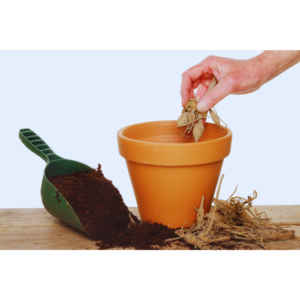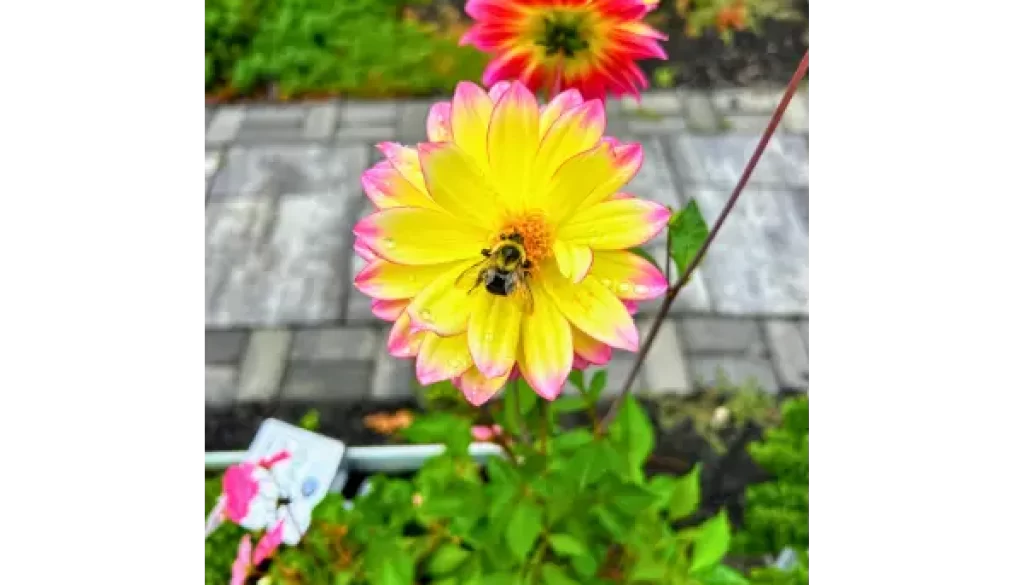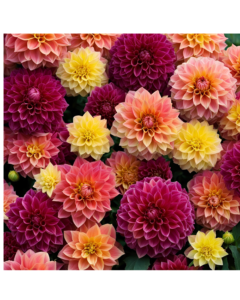Dahlias: A Guide to Growing and Caring for These Vibrant Blooms
Dahlias are a beloved addition to any garden, offering a stunning array of colors and shapes. These versatile flowers are not only visually appealing but also provide numerous benefits for both gardeners and pollinators. Let’s delve into the world of dahlias and discover why they’re a must-have for your floral collection.
Key Benefits of Growing Dahlias
- Pollinator Paradise: Dahlias are a magnet for bees, butterflies, and other beneficial insects, contributing to a healthy ecosystem.
- Aesthetic Appeal: With their diverse colors and blooming from late summer to fall, dahlias add visual interest to your garden.
- Durability: Dahlias are known for their longevity, often blooming for several weeks.
- Versatility: Dahlias can be used in various floral arrangements and pair well with other flowers.
- Low Maintenance: These blooms are easy to grow and require minimal care.
- Deer Resistance: Dahlias are less likely to be damaged by deer, making them a great choice for gardens in areas with deer populations.
- Edibility: Dahlia tubers are edible when cooked or peeled, offering a unique culinary experience.
- Medicinal Properties: In pre-Columbian times, Dahlia roots and tubers were used for their medicinal benefits.
- Cultural Significance: Dahlias are the national flower of Mexico and hold a special place in cultural celebrations.
When Do Dahlias Bloom?
Dahlias typically bloom from mid-summer through the first frost. The peak season for most varieties is late summer to early fall. Their long blooming season makes them a favorite for gardeners who want continuous color.
How to Plant Dahlias
To plant dahlias:
- Timing: Plant dahlia tubers in the spring after the last frost.
- Location: Choose a sunny location with well-drained soil; dahlias need full sun to thrive.
- Spacing: Space tubers according to the recommended distance for the specific type of dahlia you’re growing.
- Depth: Plant tubers 4 to 6 inches deep, ensuring the “eyes” (small bumps where new growth will emerge) face upward.
Growing dahlias in pots is a great way to enjoy their beauty on a smaller scale:
- Use a large container (at least 12 inches deep) with good drainage.
- Choose a compact or dwarf variety for better results.
- Water regularly but avoid soggy soil to prevent rot.
Types of Dahlias
Dahlias come in a wide variety of types, with over 42 recognized classes. Some popular types include:
- Decorative: Known for their large, fully double blooms.
- Cactus: Have spiky, rolled petals giving a star-like appearance.
- Ball and Pompon: Round blooms with tightly arranged petals.
- Collarette: Feature a ring of short petals with a contrasting center.
Growing Dahlias: A Step-by-Step Guide
- Planting: Plant in spring after the last frost.
- Watering: Water regularly, especially during dry periods. Ensure soil remains moist but not waterlogged.
- Staking: Taller varieties may require staking to support their blooms.
- Fertilizing: Use a balanced fertilizer to promote strong growth. Avoid over-fertilizing with nitrogen, as this can lead to more foliage and fewer flowers.
When to Dig Up Dahlia Tubers
In colder climates, dahlia tubers should be dug up before the first frost. Follow these steps:
- Cut Back: Trim foliage to about 2-4 inches above the ground.
- Dig Carefully: Gently lift tubers from the soil with a garden fork.
- Dry and Store: Allow tubers to dry for a few days, then store them in a cool, dark place in a container filled with slightly moist peat or sawdust.
How to Deadhead Dahlias
Deadheading is essential to encourage continuous blooming:
- Check for Spent Blooms: Look for flowers that are past their prime.
- Cut Back: Use clean shears to snip the spent blooms just above the next set of healthy leaves.
- Regular Deadheading: Do this regularly throughout the blooming season to promote more flowers.
Materials Needed:
- Dahlia tubers
- Well-draining soil
- Sunlight
- Water
- Garden tools (shovel, trowel, rake)
- Fertilizer (optional)
Please Note: This post contains affiliate links, which means I may earn a commission if you make a purchase through these links. Your support helps keep this content free. Thank you for your understanding and support!
 Rich History and Symbolism
Rich History and Symbolism
Dahlias have a long and fascinating history, dating back to the Aztecs, who cultivated them for both food and medicinal purposes. The name “dahlia” is derived from the Swedish botanist Anders Dahl, who was one of the first Europeans to describe the flower.
Dahlias are often associated with strength, creativity, and dignity. They are also symbols of elegance, beauty, and passion. In some cultures, dahlias are believed to have healing properties and are used in traditional medicine.
As the national flower of Mexico, dahlias hold a special place in Mexican culture. They are often used in celebrations and festivals, and are given as gifts to express love and appreciation.
Dahlias are also a popular choice for floral arrangements. Their vibrant colors and long-lasting blooms make them perfect for bouquets, centerpieces, and other arrangements.
Here are some additional facts about the symbolism of Dahlias:
- Strength and resilience: Dahlias are known for their ability to thrive in a variety of conditions, even in harsh environments. This symbolizes their strength and resilience.
- Creativity: Dahlias come in a wide variety of colors and shapes, which can be seen as a symbol of creativity and imagination.
- Dignity: Dahlia’s are often associated with elegance and sophistication, which can be seen as symbols of dignity.
- Love and passion: Dahlias are often given as gifts to express love and passion. They are also a popular choice for weddings and anniversaries.
Dahlias are a beautiful and versatile flower with a rich history and symbolism. They are a great addition to any garden, and can be enjoyed in a variety of ways.
Dahlias: A Global Floral Phenomenon
Beyond their Mexican roots, dahlias have captivated cultures worldwide, leaving their mark on gardens and hearts across continents. Let’s explore their global allure:
European Elegance
In Victorian England, dahlias were a symbol of refined taste and affection. They adorned grand gardens and were frequently featured in elaborate floral arrangements. Empress Josephine of France, a renowned horticulturalist, was particularly fond of dahlias and played a significant role in introducing new varieties to Europe.
Asian Influence
Dahlias have also made their mark in Asia. In India, they are associated with wealth, prosperity, and good fortune. Their vibrant colors and striking forms are believed to bring positive energy and blessings. In traditional Chinese medicine, dahlias are used for their medicinal properties, highlighting their versatility and cultural significance.
Symbolism Beyond Borders
The symbolism of dahlias transcends cultural boundaries. They are universally recognized as symbols of:
- Beauty and Elegance:
 Dahlias’ exquisite blooms and diverse colors make them a timeless symbol of beauty and refinement.
Dahlias’ exquisite blooms and diverse colors make them a timeless symbol of beauty and refinement. - Strength and Resilience: Their ability to thrive in various conditions showcases their resilience and determination.
- Creativity: The vast array of dahlia varieties and their unique shapes represent creativity and imagination.
- Love and Passion: Dahlias are often given as gifts to express deep emotions and affection.
- Dignity and Grace: Their elegant appearance and enduring presence symbolize dignity and poise.
A Global Treasure
From the Victorian gardens of England to the vibrant markets of Mexico, dahlias have captured the hearts of people around the world. Their beauty, versatility, and cultural significance make them a truly global floral phenomenon. Whether you’re a seasoned gardener or simply appreciate the beauty of nature, dahlias offer a captivating journey through time and cultures.
Dahlias are a versatile and rewarding addition to any garden. Their vibrant colors, long-lasting blooms, and ease of care make them a popular choice for gardeners of all levels. By following these tips, you can enjoy the beauty of dahlias in your own backyard.
Questions about Dahlias:
Are Dahlias Toxic to Cats?
Yes, dahlias are mildly toxic to cats if ingested. Symptoms may include mild gastrointestinal upset or skin irritation. If you have cats that like to nibble on plants, it’s best to keep dahlias out of their reach or opt for cat-friendly plants.
Do Dahlias Need Full Sun?
Yes, dahlias thrive in full sun. Aim for at least 6 to 8 hours of direct sunlight daily to ensure healthy growth and abundant blooms. Without sufficient sunlight, dahlias may become leggy and produce fewer flowers.
- What are the best types of dahlias for beginners to grow?
Beginner-friendly dahlias include the smaller and more compact varieties like ‘Bishop of Llandaff,’ ‘Gallery,’ or ‘Happy Single’ These varieties are low-maintenance, less likely to require staking, and produce abundant blooms. - How long do dahlias bloom, and how can I extend their flowering season?
Dahlias typically bloom from mid-summer until the first frost. To extend their flowering season, deadhead regularly, remove faded flowers, and ensure they receive ample sunlight and consistent watering. - Can Dahlias be grown indoors or in containers?
Yes, dahlias can be grown in containers as long as the pots are large enough (at least 12 inches deep) and have good drainage. Compact and dwarf varieties are best for container gardening. - What is the best way to overwinter dahlia tubers in colder climates?
In colder climates, after the first frost, cut the foliage back, carefully dig up the tubers, and let them dry for a few days. Store them in a cool, dark, and dry location in a container filled with slightly moist peat moss or sawdust. - How much water do dahlias need, and what are the signs of overwatering?
Dahlias need regular watering, about 1-2 inches per week, especially during dry periods. Signs of overwatering include yellowing leaves, mushy tubers, and slow growth. - What pests or diseases commonly affect dahlias, and how can I prevent them?
Common pests include aphids, spider mites, and slugs, while diseases like powdery mildew and root rot can occur. Prevent them by maintaining good air circulation, avoiding waterlogged soil, and using organic insecticidal soap when needed. - How do you properly prune dahlias to encourage more blooms?
To encourage more blooms, pinch out the central stem when the plant is about 12 inches tall to encourage branching. Regularly deadhead spent flowers throughout the season. - What kind of fertilizer is best for dahlias, and how often should it be applied?
Use a low-nitrogen, high-phosphorus fertilizer, such as 5-10-10 or 10-20-20, applied every 3-4 weeks during the growing season to promote healthy blooms without excess foliage. - How do you divide and propagate dahlia tubers for the next planting season?
To divide and propagate dahlias, carefully dig up the tubers in the fall, separate them with at least one “eye” on each division, and store them until the following spring for planting. - Are there any companion plants that pair well with dahlias in the garden?
Dahlias pair well with companion plants like zinnias, marigolds, cosmos, and salvias, which attract beneficial insects and provide a colorful garden display. Avoid planting them near vegetables like beans or peppers, which may compete for nutrients.
What to learn more about gardening check out this book: The Ultimate Gardening Guide: Mastering Year-Round Vegetable, Flower, and Herb Cultivation: Proven Techniques, Seasonal Planting, and Sustainable Practices for Thriving Gardens and Bountiful Harvests







